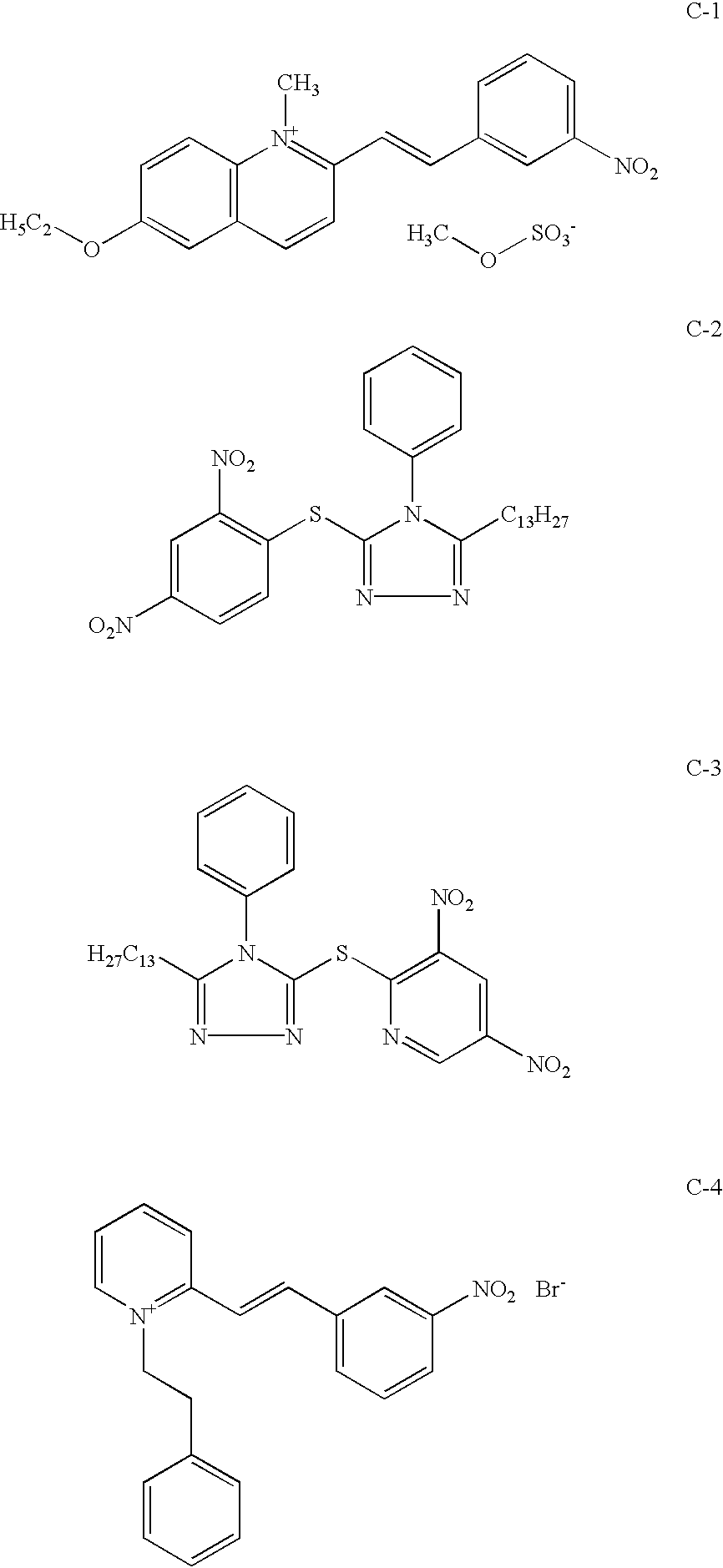Film/screen system and image-forming system for use in direct X-ray applications
a technology of film/screen system and image-forming system, which is applied in the field of direct x-ray system, can solve the problems of reducing the sensitivity of direct x-ray, reducing the maximum density to an unacceptable level, and lowering the contrast. , to achieve the effect of high diagnostic value, high image quality and high speed
- Summary
- Abstract
- Description
- Claims
- Application Information
AI Technical Summary
Benefits of technology
Problems solved by technology
Method used
Image
Examples
example i
The effect of the addition of a desensitiser to a material for industrial radiography containing tabular AgBr(I) crystals on the photographic properties is illustrated hereinafter.
Preparation of Emulsion T, Having Tabular Grains
To a solution of 5.5 g of oxidised gelatine (less than 30 .mu.mole methionin per g) in 3 l of demineralized water, adjusted to a pBr of 2.4 by adding KBr and a pH of 1.7 by adding H.sub.2 SO.sub.4, were added by a double jet addition method aqueous solutions of 1.96 M AgNO.sub.3 (hereinafter referred to as S1) and 1.96 M KBr (hereinafter referred to as S2) both at a constant flow rate of 16 ml / min during 27 seconds. During this period, the reaction mixture was maintained at 51.degree. C. When the addition was completed, stirring continued during 1.5 minutes and then, temperature was increased up to 70.degree. C. over a period of 25 minutes, followed by addition of a NaOH solution over a period of one minute in order to adjust pH to a value of 5.6. Then stirri...
PUM
| Property | Measurement | Unit |
|---|---|---|
| volume | aaaaa | aaaaa |
| aspect ratio | aaaaa | aaaaa |
| average volume | aaaaa | aaaaa |
Abstract
Description
Claims
Application Information
 Login to View More
Login to View More - R&D
- Intellectual Property
- Life Sciences
- Materials
- Tech Scout
- Unparalleled Data Quality
- Higher Quality Content
- 60% Fewer Hallucinations
Browse by: Latest US Patents, China's latest patents, Technical Efficacy Thesaurus, Application Domain, Technology Topic, Popular Technical Reports.
© 2025 PatSnap. All rights reserved.Legal|Privacy policy|Modern Slavery Act Transparency Statement|Sitemap|About US| Contact US: help@patsnap.com


